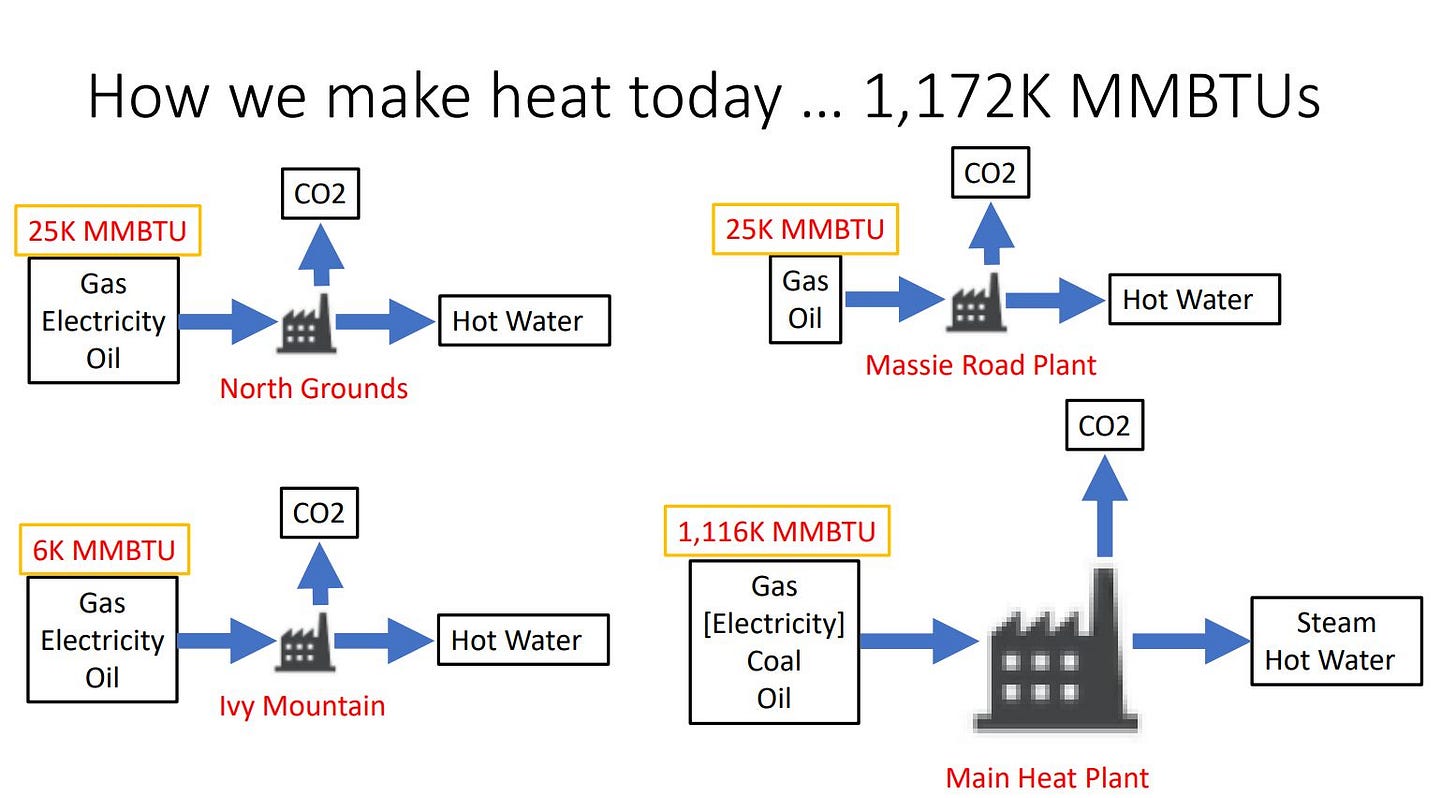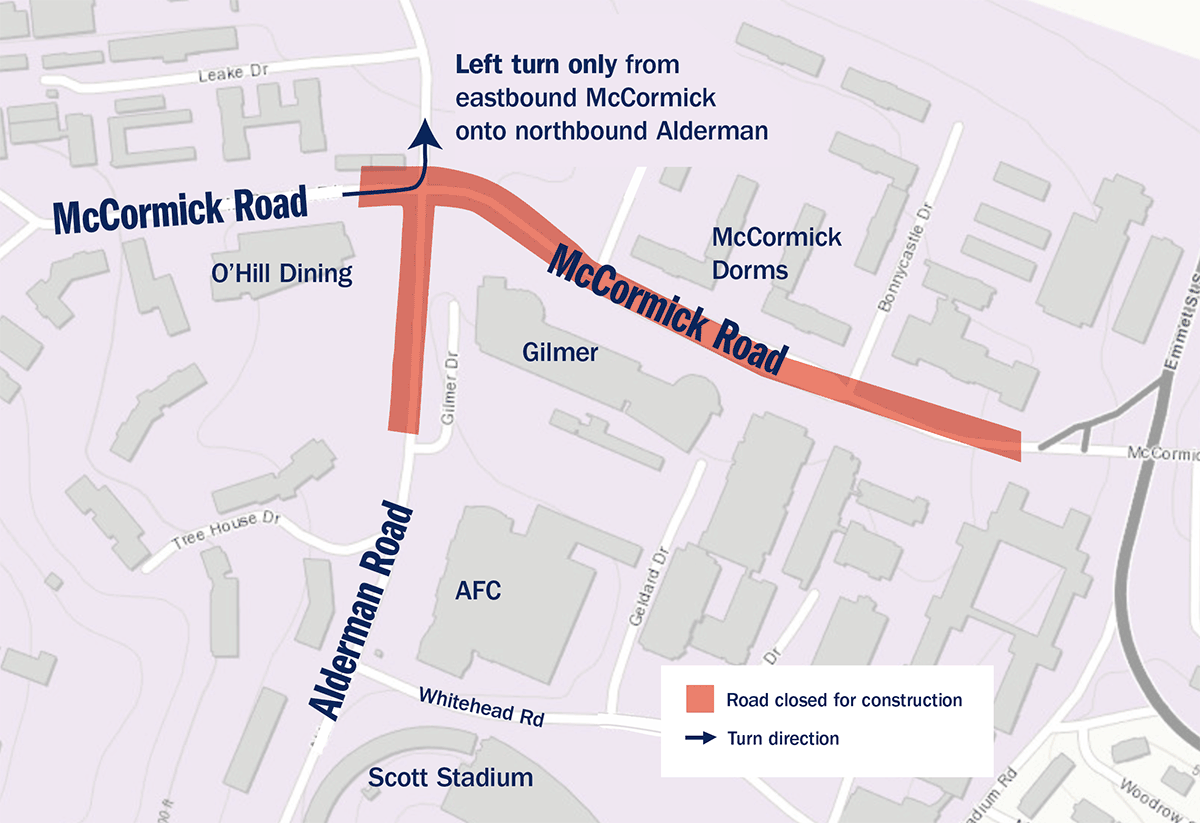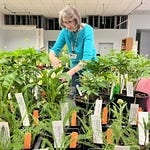Thank you for calling Charlottesville Community Engagement. To whom shall I direct your call? At least, that’s how I would answer the phone if this newsletter and podcast was an office of some sort. Yet you’re stuck with a normal installment of the program for May 10, otherwise known as National Receptionists Day.
On today’s program:
Albemarle County has signed on to a plan to prepare for natural disasters and other emergencies
Changes are in the works for how a closed-door planning group operates
There will some major roadway changes around the University of Virginia this summer
An official with the Charlottesville Regional Chamber of Commerce describes the economic impact of the defense sector
First shout-out: Prepare to celebrate Downtown In Bloom
In today’s first Patreon-fueled shout-out, the Friends of Charlottesville Downtown are in the midst of a month-long Downtown in Bloom event this May with a celebration of art, flowers, and the beauty of Spring.
There’s a Spring Stroll all month with specialty drinks at bars, restaurants and coffee shops. Pickup the Spring Stroll passport to qualify for a special celebration!
Participating businesses will have a Flower Competition in container gardens and planter boxes outside of their establishments. Voting takes place May 11 through May 31!
The 2023 Chalk Fest will be held on May 20 with 13 local artists creating murals from the Ting Pavilion to the Dairy Market
And make sure you check out artwork from Charlottesville City Schools in the windows of downtown merchants
To learn more about Downtown in Bloom and other initiatives of Friends of Charlottesville Downtown, visit friendsofcville.org
Albemarle Supervisors endorse Regional Hazard Mitigation Plan
Last week, Albemarle County became the latest locality in the area to adopt a plan to prepare for natural disasters and other emergencies. The Thomas Jefferson Planning Districts maintains and updates the Regional Natural Hazard Mitigation Plan, a document required by the federal government in order to qualify for certain grants and other funding sources. (read the plan)
The plan also serves as a guide for how the county uses its resources.
“It covers from the preventative measures that we might be able to take to actual response strategies including staffing our Emergency Operations Center, recovery, said John Oprandy, Albemarle County’s Deputy Chief of Emergency Management with the Fire and Rescue.
Community Safety is the number one goal in the strategic plan adopted by the Board of Supervisors last October. One Supervisor pointed out that many of the mitigation steps serve multiple purposes such as advancing the county’s climate action plan.
“When I look at the list of items that we either have in the works that we are working on or have on a to-do list, it does connect to our budget discussion and our monies,” said Supervisor Diantha McKeel.
The section for Albemarle County has dozens of mitigation steps ranging from AHE1:
“Increase the number of trained emergency responders, both staff and volunteers. Establish a minimum ICS/emergency management training/certification requirement for essential County staff. Train/educate 70% of identified staff to minimum qualifications. Conduct disaster tabletop and/or full-scale scenarios on an annual basis to exercise skills/ processes.”
To ALI6:
“Promote increased tree canopy in urban areas to reduce heat island effect.”
Albemarle has now joined all other surrounding counties and four towns in adopting the plan. Charlottesville City Council deferred a vote in early April after Mayor Lloyd Snook asked for more information.
“We are working with the City of Charlottesville to reintroduce the plan on a City Council agenda in the coming weeks,” said Ian Baxter, a planner with the TJPDC.
Changes may be coming to closed-door planning group
A non-public body of city, county and UVA officials are considering changes to the group operates.
“There a lot of administration and housekeeping issues that we have worked through,” said Charlottesville Planning Commissioner Hosea Mitchell in a report to his colleagues Tuesday.
The Land Use and Environmental Planning Committee (LUEPC) was formed after the Albemarle Board of Supervisors and City Council agreed in late 2019 to disband a public body that had operated in public to discuss areas of mutual interest. It does not have to conform to Virginia’s open meeting laws because no elected officials are members.
According to the minutes from the April 21 meeting, several changes are under consideration.
The LUEPC charter will be amended to remove names of representatives who attend but will leave the organization names
A process will be created to update the charter on a routine basis
A process will be created by which other groups can ask to join LUEPC
Until then, other organizations will be considered subject matters
One such organization is the Virginia Department of Transportation which has addressed the group in the past but does not attend every meeting
At the very least, VDOT will be invited each quarter
Presentations will be posted on the webpage the Thomas Jefferson Planning District Commission set up before the former Planning and Coordination Council was disbanded (view the minutes)
The group is also considering ways to amend the Three Party Agreement signed in 1986 between UVA, Albemarle County, and Charlottesville. (read the agreement)
There’s also possibly an attempt to keep information at the meetings more secure.
“Jodie [Filardo] will develop a sample statement for initial consideration by the Planning Team regarding the confidential nature of the conversations within LUEPC,” reads agenda item 2.d.i.
Filardo is the director of community development in Albemarle County.
Mitchell had very little to say to the Commission or the public about a study on thermal energy that University of Virginia officials presented on April 21. I’ll have more details about that study in a future edition of the newsletter but feel free to take a look here if you’d like to write your own.

Alderman/McCormick intersection to be limited this summer
The University of Virginia makes many infrastructure changes in the months after graduation and this summer will include some disruptions around Grounds while work takes place.
Bill Palmer is the UVA Architect’s representative to the Charlottesville Planning Commission. He told that group last night that the western side of McCormick Road will be shut down later this month.
“That’s going to be closed for the summer to kind of finish the streetscape that hadn’t been completed with Gilmer Hall because there were other projects going on,” Palmer said.
That work will coincide with another plan to install new water lines to the residence halls on Alderman Road to help meet UVA’s energy efficiency goals. That project will lead to another shut-down.
“The second part of that is the major closure of Alderman and McCormick intersection,” Palmer said. “There will be only be one condition that you can get through there and that is to loop around if you are coming off Fontaine you can loop up O’Hill, come around down McCormick so you’re going east on McCormick and then you can take a left.”
Status updates will be available on the website of the UVA Department of Faciliites Management.
Second shout-out: eBike Lending Library
In today’s second subscriber supported shout-out, one Patreon supports wants you to know that Charlottesville now has an eBike Lending Library! E-bikes are a great way to get around community but there are many brands and styles to choose from. Because many e-bikes are sold online, it can be a challenge to try an e-bike before buying one.
The Charlottesville E-bike Lending Library is a free, not-for-profit service working to expand access to e-bikes in the area. They have a small collection of e-bikes that we lend out to community members for up to a week, for free. You can experience your daily commute, go grocery shopping, or even bike your kids to school, and decide whether e-bikes are right for you. Check out this service at https://www.ebikelibrarycville.org
Chamber official details defense sector’s 1.2 billion impact on community
A new study has quantified the economic impact the military and defense sector plays in the region.
“We’re not manufacturing tanks, we’re not doing weapons systems,” said Lettie Bien, the program manager for the Defense Affairs Committee of the Charlottesville Regional Chamber of Commerce. “We’re not doing weapons systems. This is mostly intelligence, research and development.”
Bien’s position is funded in part by Albemarle County as part of the Project ENABLE economic development strategy.
The Chamber commissioned the Weldon Cooper Center to study the impact of the sector. (read the study)
“It was critical I felt that we needed to know exactly what the defense community adds to the bottom line of the county, the county’s economic vitality,” Bien said. “If you don’t know what you have, you don’t know what you can lose and you don’t know how it will impact you unless you have the metrics. I am happy to say that we now do have the metrics.”
The study was also produced in collaboration with the City of Charlottesville and the University of Virginia Foundation and covers the city, Albemarle, and Greene County.
“We did include Greene County,” Bien said. “They don’t account for a significant amount but they are growing in the defense arena as well, particularly because they have a defense production zone that their entire county falls into.”
Among other things, that means that the county reduces business license and machine/tools tax as well as regulatory flexibility.
Defense assets in Albemarle include Rivanna Station, several contractors, and the Judicial Advocate General School at the University of Virginia. Other UVA activity is accounted for as well.
“Grants, the contracts, the start-ups,” Bien said. “We found all of these bunch of patents that the [Department of Defense] funded that UVA now has. We included veterans, Reserve and National Guard and then there are some other entities that were small but we got as best the information as we possibly could.”
In all, Bien said there are just under 4,000 direct jobs in the defense industry in the region with over 1,350 indirect jobs. There are another 2,000 “induced” jobs which means those generated by spending by workers in the defense sector.
One example of a large company in the sector is Northrop Grumman.
“They have 480 employees and do no work with Rivanna Station,” Bien said. “They work for the Navy and the Coast Guard and the navigational systems that go into ships. About 25 percent of their workforce are veterans.”
All of this together adds up to $1.2 billion a year but Bien said that number is likely an undercount as more information has come in since the study was completed. It also doesn’t cover spouses of those in the sector.
Bien said many companies would like to expand but there is concern about whether there is enough space. She said the study will be used to help educate officials about steps can be taken to keep Rivanna Station here should there ever be another round of military base relocation.
“There is a location in the midwest that has already offered [the Department of Defense] a hundred free acres for Rivanna Station to move,” Bien claimed.
Supervisor Ned Gallaway was on the board when the county adopted Project ENABLE. That was a milestone in a county that for many years resisted economic development.
“This report is an excellent example for folks who want to understand why economic development needs to be a top priority for this Board and our county because it explains wonderfully how when you have an employment sector like this when it goes into the direct, the indirect, and the induced ways that those dollars come into your community,” Gallaway said. “That’s something that we need to understand.”
Project ENABLE built off a 2012 study that looked at target industries for Albemarle and defense was part of one of the four recommendations for what the county should focus on:
Bioscience and Medical Devices
Business & Financial Services
Information Technology and Defense & Security
Agribusiness and Food Processing
What’s next for economic development? Albemarle County is about to embark on an update of Project ENABLE. Supervisor Donna Price thanked Bien and the Chamber for their work.
“This is critical information for us to take as we look at the broader economic development of the county here,” Price said.
Reading material:
UVa alumni expand eco-friendly agribusiness to second Albemarle County location, Charlottesville Daily Progress, May 9, 2023
Trespasser sends three Charlottesville schools into 'lock down status', Charlottesville Daily Progress, May 9, 2023
Update: Albemarle police clear bomb threat at Rivanna Ridge Giant Food Store, NBC29, May 10, 2023
End notes for #532
Another shorter version of the program intended to get information out as I can. This July will be the third anniversary of this experimental newsletter and a definite rhythm has yet to present itself, but progress is also being made. That forward momentum is made possible through paid subscribers which may or may not include you.
If you, thank you.
If not you, that’s okay. Maybe one day you will be able to and hopefully enough people will keep supporting in order to so I can keep writing up what I can. And always remember that Ting will match your initial paid subscription.
And if you sign up for Ting at this link and enter the promo code COMMUNITY, you’ll get:
Free installation
A second month for free
A $75 gift card to the Downtown Mall
Thanks to Wraki for incidental music in the podcast, which you can’t hear unless you listen to it. Check out the work on BandCamp!



















Share this post